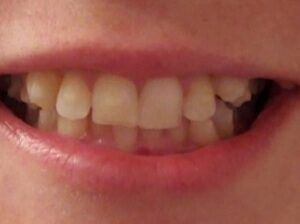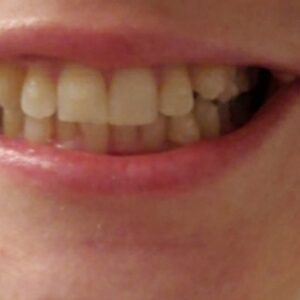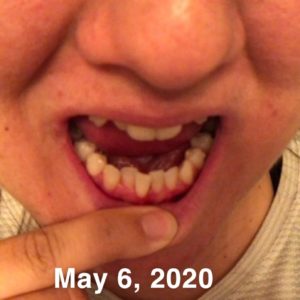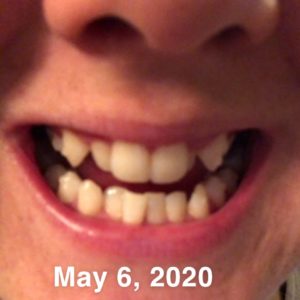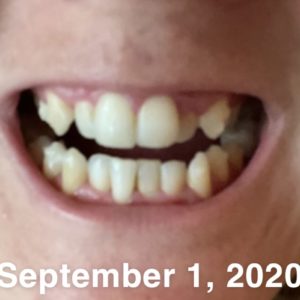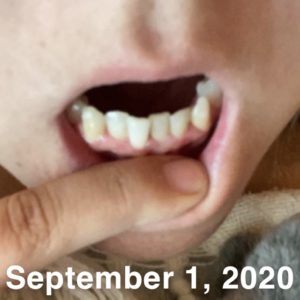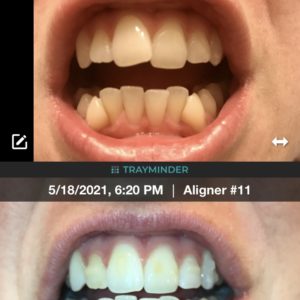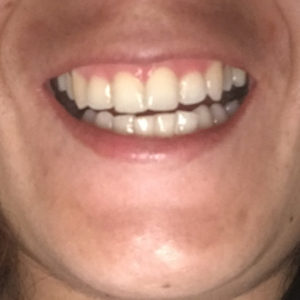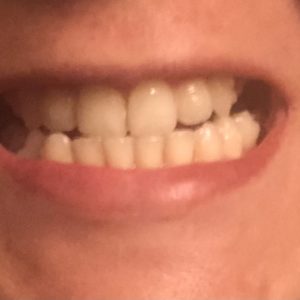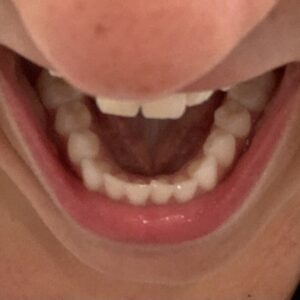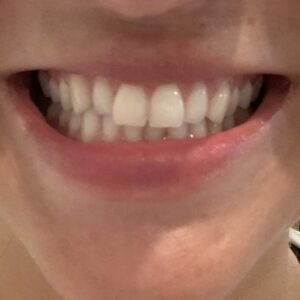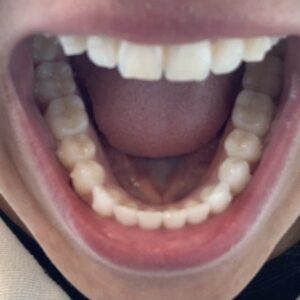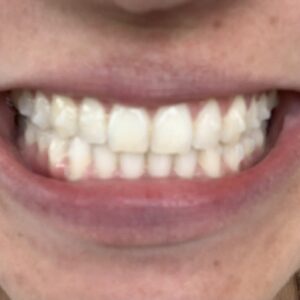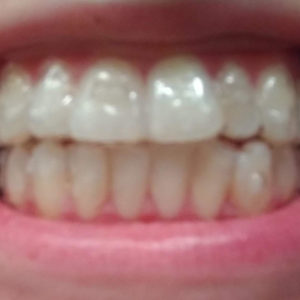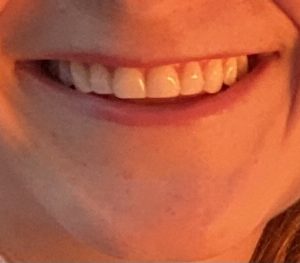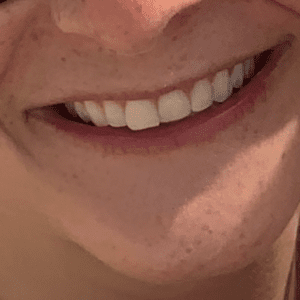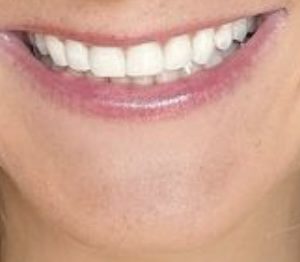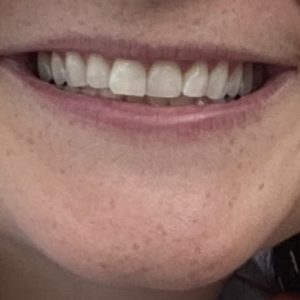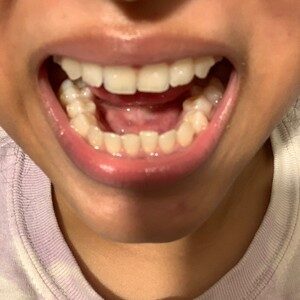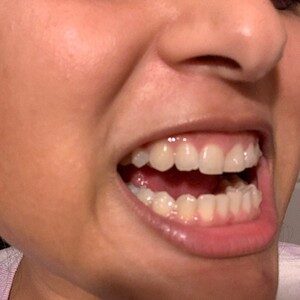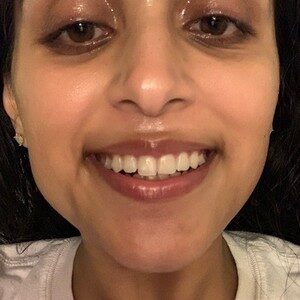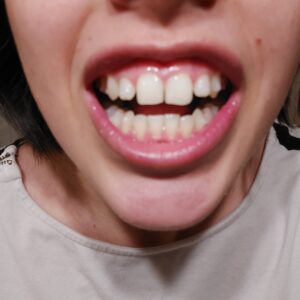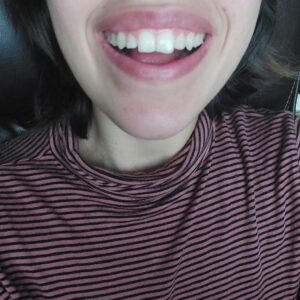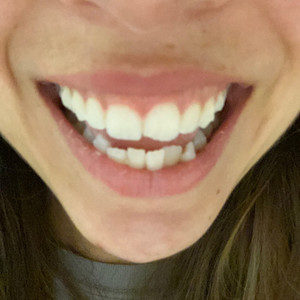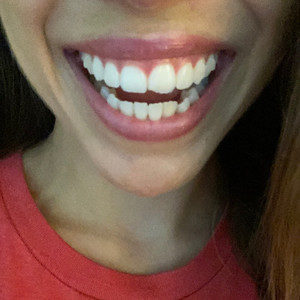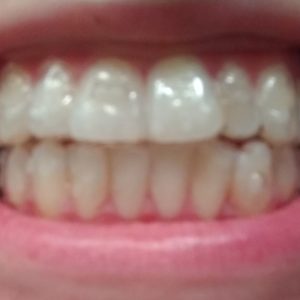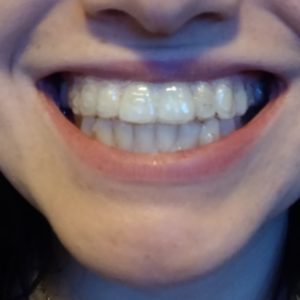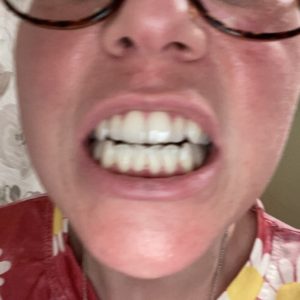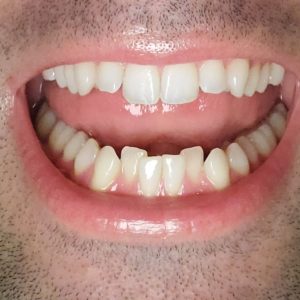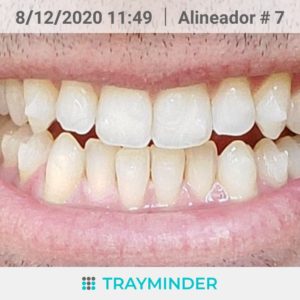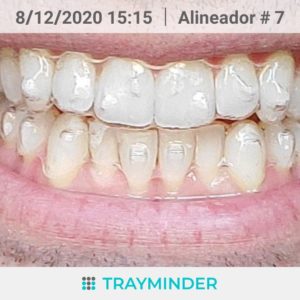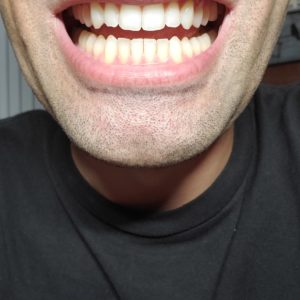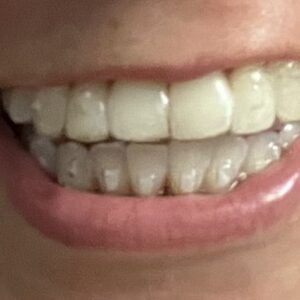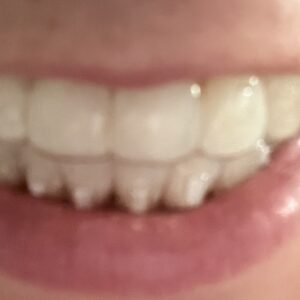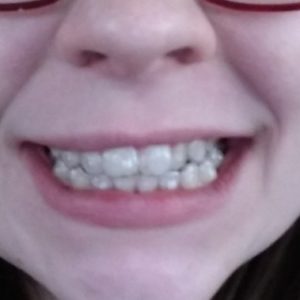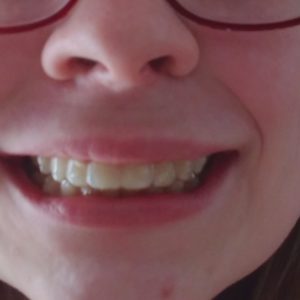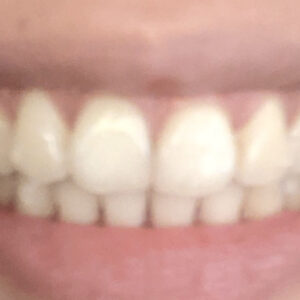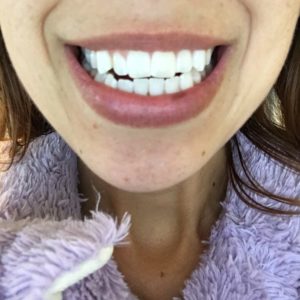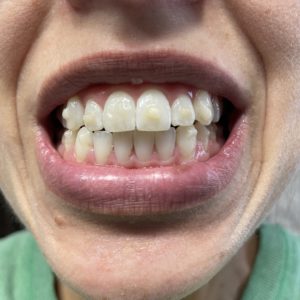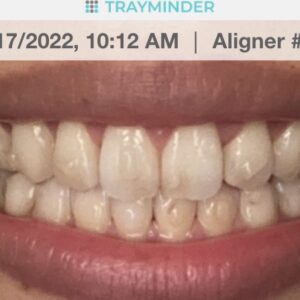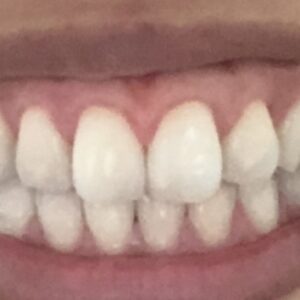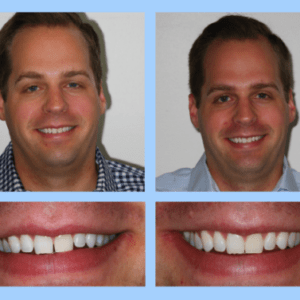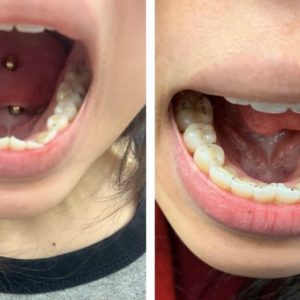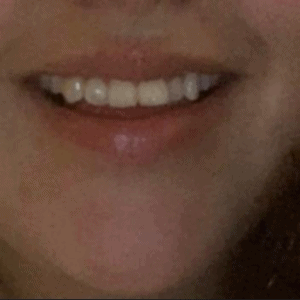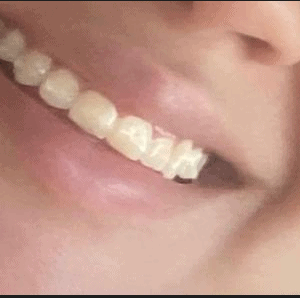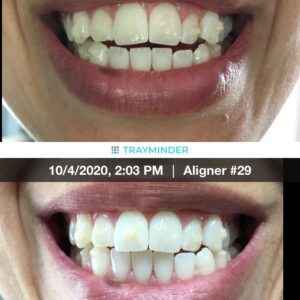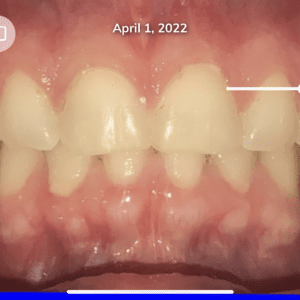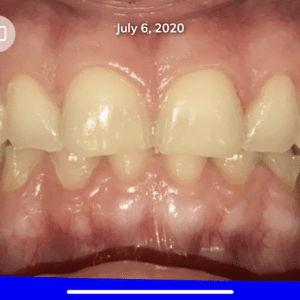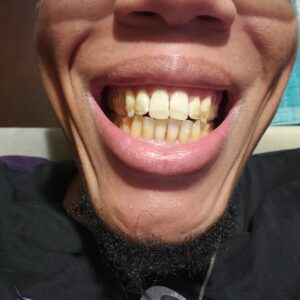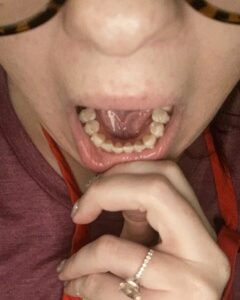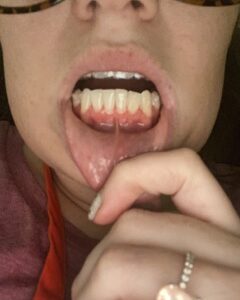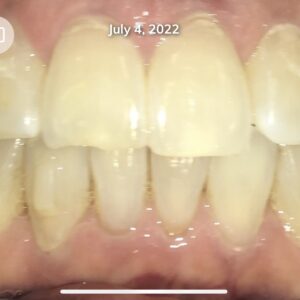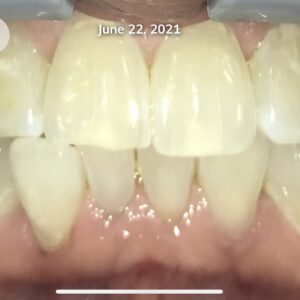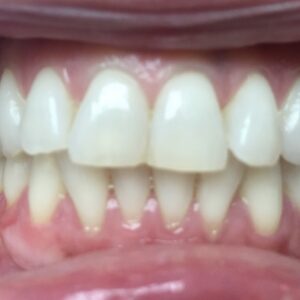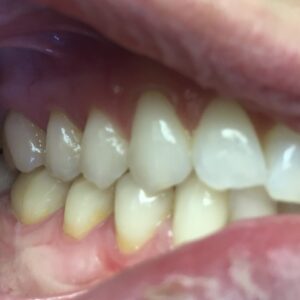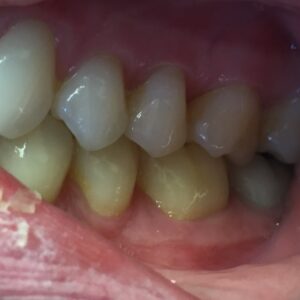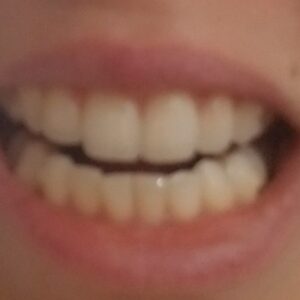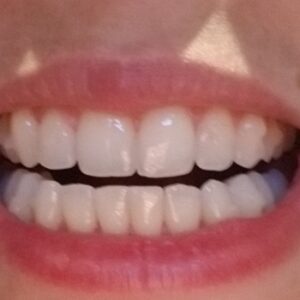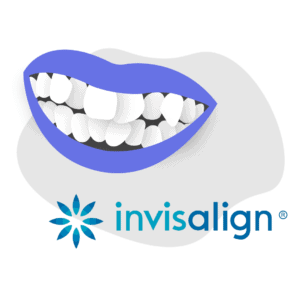
When teeth don’t have enough space in the jaw or are displaced, they begin to push together, overlap, and sometimes rotate. This is called teeth crowding, and it can occur anywhere in the upper or lower dental arches. Although the majority of cases are not cause for serious medical concern, teeth crowding can make it difficult to maintain proper dental hygiene, and lead to an increased risk of cavities.
Invisalign is a popular clear aligner treatment used to correct this issue, for both preventative and aesthetic reasons. In this guide, we’ll discuss the benefits and drawbacks of Invisalign as a crowding treatment, as well as several alternatives if Invisalign isn’t the right fit for you.
Table of Contents
Whether it’s an entire row of overlapping teeth or just two that refuse to line up with the others, crowding can be a nuisance. It doesn’t just make oral hygiene difficult. It can also discourage you from smiling for photos or laughing with friends. But don’t worry — you’re not stuck with crowded teeth for life. It’s easy to treat, and you’ve got a few quality options.
Invisalign is a popular choice, for both preventative and aesthetic reasons. In this guide, we’ll discuss the pros and cons of Invisalign as a crowding treatment, as well as several alternatives if Invisalign isn’t the right fit for you.
What Is Teeth Crowding?
When teeth don’t have enough space in the jaw or get displaced, they push together, overlap, and sometimes rotate. This is called teeth crowding, and while it most commonly appears in the front six top or bottom teeth, it can occur anywhere on the upper or lower dental arches.
Although most cases are not cause for serious medical concern, teeth crowding can make flossing and brushing more difficult, not to mention decrease the confidence you have in your smile. Those are reasons enough to get your teeth straightened, but they’re not the only potential symptoms.
Since crowded teeth distribute your bite pressure unevenly, they can cause jaw pain, headaches, and uneven wear on your enamel. They can also trap plaque in hard-to-reach places, making them harder to clean. That puts you at greater risk of cavities, tooth decay, gum disease, and other oral health concerns.
What Causes Teeth Crowding?
Crowding is often an issue of insufficient space — like a jaw that’s too small for the teeth, or simply too many teeth for the space available. This forces them to compete for space, often pushing together and overlapping.
However, crowding can also occur if you lose your baby teeth too early or too late. Losing them prematurely can cause your permanent teeth to drift, while losing them too late can make them erupt at an irregular angle.
Finally, teeth can shift and crowd as we get older. As the jaw bone and its connecting ligaments weaken with age, it’s quite common for middle-aged and older adults to notice crowding — especially overlapping bottom front teeth — that may not have been present at a younger age.
Can Invisalign Correct Teeth Crowding?
Yes! Cases of crowding and spacing were Invisalign’s specialty when the technology first emerged 20 years ago, and it’s still considered a highly effective treatment to this day. Invisalign offers a treatment that’s less intrusive than traditional braces without sacrificing results, all for around the same cost ($5,000 on average).
That’s not to say Invisalign hasn’t evolved over the years. They’ve leveraged advances in dental technology to expand their capabilities and treat a wider range of conditions. So, even if your case of crowding is compounded by a bite misalignment like overbite or underbite, Invisalign may still be a viable option for you.
When paired with appliances like elastics and palatal expanders, or procedures like tooth shaving and extraction, Invisalign can achieve drastic smile transformations. Dentists can also employ Invisalign’s “Smartforce” attachments — small tooth-colored shapes affixed to individual teeth that allow for more intricate movements. These attachments allow your dentist to shift a specific tooth, as opposed to the entire top or bottom row. While many tooth crowding cases only require standard clear aligners, these supplemental treatments give your dentist a variety of tools to craft a program that delivers the specific results you desire.
That said, Invisalign isn’t the most affordable option on the market. Even though you might receive insurance coverage (depending on your plan), the average cost of Invisalign is $3,000–$8,000. Yet given their power, quality, and long track record of stunning results, that cost might just be worth it for you.
What’s It Like to Wear Invisalign?
Adults often favor Invisalign over braces because they’re 1) clear, and 2) removable. This means that they’re much less noticeable, and you can take them out to eat, brush your teeth, or attend an important meeting or other special occasion. If your treatment plan includes Smartforce attachments, they’ll stay on the entire time — but again, they’re hardly noticeable.
Invisalign is also typically more comfortable than braces. Since they’re made of plastic, clear aligners irritate the cheeks and tongue far less than metal wires and brackets. Of course, moving your teeth always causes some discomfort, no matter which treatment you pick. Most people find Invisalign the most uncomfortable the first few days after starting a new set of aligners, which you’ll typically do about once every two weeks. But overall, Invisalign offers more comfort and flexibility than conventional braces.
On the flip side, Invisalign treatment requires a lot more discipline than traditional braces. Since Invisalign trays are removable, you have to wear them for 22 hrs each day to align your teeth and jaws successfully and finish your treatment on schedule. If you’re not motivated enough to play through the pain for the long-term payout — or frequently forget to wear them — Invisalign might be TOO flexible of an option for you.
Alternative Invisible Aligners
While Invisalign pioneered the mass-market clear aligner and remains among the most popular providers out there, there are a few other clear aligner brands that present equally intriguing alternatives. Plus, there’s a whole new industry on the rise for at-home teeth aligner brands that don’t require a single trip to the dentist.
Whether you’re simply interested in an alternative clear aligner brand or you’re looking to correct your crowding from home, there’s most likely a solution on this list for you. Below, we’ve broken down some of the most popular alternatives to Invisalign.
In-Office Brands
Align Tech (makers of Invisalign) is no longer the only company that partners with dentists and orthodontists to provide treatment with clear aligners. Like Invisalign, these treatments include regular in-person care from your dentist or orthodontist, and they can all incorporate attachments and appliances to correct severe cases of crowding and even bite issues.
- ClearCorrect: Founded in 2006, ClearCorrect isn’t as experienced as Invisalign, but they’ve still been delivering quality results for over a decade. They typically charge dentists and orthodontists less for lab fees, which can make their aligners slightly more affordable. Plus, they have multiple treatment plans — including one where you pay per aligner — so they can tailor your plan to your condition.
Check out our full ClearCorrect review to learn more.
- SureSmile: Another one of Invisalign’s oldest competitors, SureSmile launched its clear aligners in 2007. It can treat the same scope of misalignments as Invisalign, and the company says that their patients are less likely to need refinements after treatment. Despite this, they boast lower prices and, since they don’t have a specific mandatory scanner, providers can save money and pass those savings on to you.
Interested? Read through our complete SureSmile review for more.
- 3M Clarity Aligners: 3M — the company behind Scotch Tape and Post-Its — creates clear aligners with incredible teeth-moving power thanks to their unique attachment placement. They’re only available to orthodontists, who can use two different proprietary materials to deliver a treatment highly customized to your condition. Since 3M also makes Clarity Clear Braces, orthodontists can also design a combination treatment that uses them simultaneously with aligners.
Our full 3M Clarity Aligners review has a ton more information.
Home Invisible Aligners:
In recent years, several online companies have entered the industry to provide a more affordable option for adults seeking to correct mild tooth and jaw misalignments from home. Similar to Invisalign, you’ll receive a set of clear, removable aligners customized to your teeth by a dental professional. But unlike Invisalign, they don’t require any trips to the dentist’s office — and treatment often costs a lot less. They can’t handle severe misalignments or significant bite issues, but they’re a convenient choice for milder cases.
- Byte: Byte’s claim to fame is their ability to deliver impressive results even faster than the competition — their average treatment plan length is just 4–5 months. Plus, they put a lifetime guarantee on your smile, and for those who’d prefer to straighten their teeth at night, they offer “At-Night” aligners designed with premium materials to withstand nighttime teeth grinding.
See our comprehensive review of Byte for an in-depth look at their services.
- Candid: Candid started as a fully remote clear aligner service, but have since shifted to a hybrid treatment that combines elements of in-office and at-home care. After an initial in-person consultation and examination with a local dentist, you’ll check in virtually via their CandidMonitoring service every 14 days for the rest of your treatment. It usually costs $3,500 or more, but you’ll get a higher level of care than other at-home options.
Our complete Candid review has a lot more important information.
- SmileDirectClub: SmileDirectClub was one of the first companies to offer at-home clear aligner treatment and continues to be the most popular option. Founded in 2014, SmileDirectClub has treated over 1.5 million patients to date. With SmileShops across the country where you can get a free teeth scan, they’ve also gone the extra mile to make the treatment process as easy as possible. Plus, they have a lifetime smile guarantee and extensive refund policies.
Check out our SmileDirectClub review for a deep dive into their treatment.
Other Treatment Options
Braces
If you think you’d have trouble integrating Invisalign into your day-to-day routine, it might be worth considering traditional braces instead. Braces are one of the most trusted and time-tested treatment options for teeth crowding, especially more severe or complex cases. Adults might shy away from the metal brackets involved, but their transformative results are undeniable. Not to mention that recent dental technology has engendered the development of new, less visible styles, like clear braces that blend in with your teeth and lingual braces that are positioned behind them.
Traditional braces generally take 12–30 months and the average cost of braces is $3,000–7,000. However, teeth crowding cases are usually much simpler than, for example, bite misalignments, so they often fall into the lower end of both ranges. Read more about types, outcomes, and much more in our guide to correcting tooth crowding with braces.
Palatal Expanders
Certain cases of teeth crowding stem from an undersized upper and/or lower jaw, and in these cases, widening the roof of the mouth (the palate) or lower dental arch may correct the issue. Expanders are metal devices that a dentist bonds to the inside of the upper or lower dental arches. By adjusting the expander, your dentist can control the widening of each arch, providing more space for your teeth to move into alignment.
Dentists sometimes pair palatal expanders with other orthodontic treatments, but they can also work on their own, depending on your specific issue. After examining your crowding, a dentist can tell you if palatal expanders could be a viable solution.
Final Thoughts
With decades of proven results, Invisalign has earned a reputation as one of the most reliable and effective treatments for teeth crowding. The program can transform smiles like traditional braces, with the added benefit of being invisible and removable. But no treatment is without its downsides. Invisalign requires more discipline than braces, and costs significantly more than home teeth aligners.
Weigh the pros and cons of each treatment to find one that’s right for your specific circumstances. You should also visit a dentist for a professional analysis of your teeth. With all this information in your pocket, you can choose the ideal path for you.
